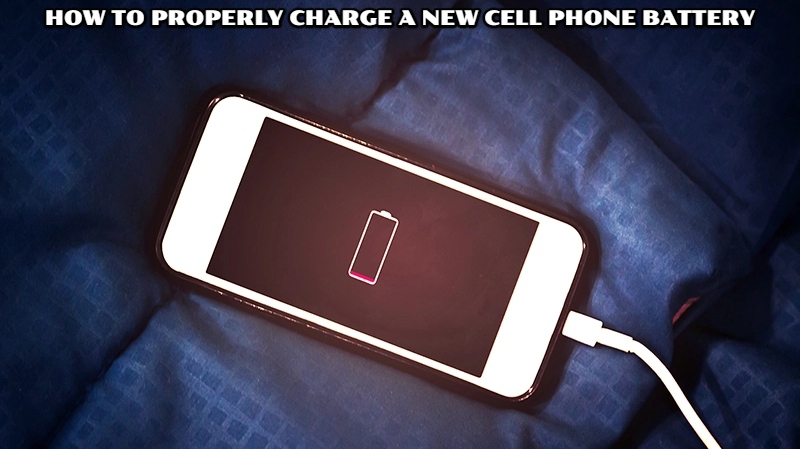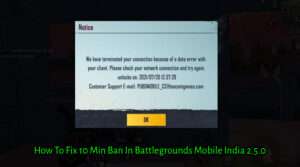How To Properly Charge a New Cell Phone Battery Why does your phone’s battery seem to be deteriorating over time? It may appear to have plenty of juice as you crawl into bed at the end of the day, but as time passes, your battery is only half-charged by midday.
Part of it is due to how you use your phone: the apps you install, the garbage you gather, the customizations you make, and the increasing number of notifications you receive. (For more information on how to increase the life of your battery, see our guide.)
We must learn how to charge a battery in a way that maintains it healthy for as long as possible until we have new-fangled technologies like smart garments that optimise wireless performance.
Phone batteries, like all batteries, degrade over time, meaning they lose their ability to store the same amount of charge. A three-year-old phone battery will never last as long as a brand-new battery, which should last between three and five years or 500 to 1,000 charging cycles.
The amount of charging cycles, temperature, and age all wear out lithium-ion batteries.
You can, however, keep your smartphone battery healthy for much longer if you follow our battery care suggestions.
Table of Contents
What is the best time to charge my phone?

The golden rule is to keep your battery between 30% and 90% charged for the majority of the time. When it falls below 50%, top it up, but unplug it before it reaches 100%. As a result, you might want to think twice about leaving it plugged in overnight.
A lithium-ion battery ages more quickly when the last charge is increased from 80 to 100 percent.
Perhaps it’s better to recharge first thing in the morning, at the breakfast table or at your desk. It’ll be easier to keep track of the battery percentage while charging this way.
When the battery level hits a certain percentage, iOS users can utilise the Shortcuts app to set a notification. This may be found under the “Automation” menu, followed by “Battery Level.”
Giving your phone a full charge is not fatal for a phone battery, and it may seem counter-intuitive not to, but doing so every time you charge it will reduce its longevity.
At the opposite end of the spectrum, don’t let your phone’s battery drop below 20%.
Lithium-ion batteries don’t like it when their percentage of charge drops below 20%. Instead, think of the extra 20% “at the bottom” as a buffer for busy days, but start charging when the Low Battery level alert shows on weekdays.
Lithium-ion batteries, in short, thrive best in the centre. Don’t obtain a low battery percentage, but don’t get a high one, either.
Is it necessary to fully charge my phone’s battery?
No, not every time you charge it, at least. Some individuals suggest that you recharge your battery from zero to 100 percent (a “charge cycle”) every a month, as this re-calibrates the battery and is similar to rebooting your computer.
Others, on the other hand, dismiss this as a fallacy about current lithium-ion batteries in phones.
Frequent, little charges, rather than full refilling, are better for your battery’s long-term health.
Optimised Battery Charging (Settings>Battery> Battery Health) in iOS 13 and later is aimed to reduce battery wear and improve battery lifespan by minimising the time your iPhone spends completely charged. When you enable the function, your iPhone may postpone charging past 80% in certain instances, based on Location Services, which tell the phone when it is at home or at work (when you are less likely to need a full charge) versus when you are travelling.
The more stress it experiences. As a result, topping up the battery frequently extends its life.
Also, see the list of the best power banks.
Is it necessary for me to charge my phone overnight?
Despite the ease of waking up with a full battery in the morning, it’s preferable to avoid it as a rule. Each full charge is referred to as a ‘cycle. and your phone is only designed to last for a certain number of cycles.
If you charge your phone overnight, you’ll be sure to miss when it reaches the magic 80 percent point, which is ideal for long-term battery life.
While most modern smartphones have built-in sensors that switch off charging when the battery reaches 100%, they will still lose a little bit of power while idle if left on.
It’s possible that you’ll get a “trickle charge” when the charger tries to keep the phone at 100 percent charge while it naturally loses battery over the night. This implies that during a longer-than-required charge, your phone is constantly jumping between a full charge and a little below that full charge – 99 percent to 100 percent and back again. It can also cause the phone to heat up, which is harmful to the battery.
As a result, charging during the day is preferable to charging at night.
Turning on Do Not Disturb and Airplane Mode is the best insurance. Better yet, you could turn off your phone completely, although this may not be possible if you use it as an alarm clock or need to be available for calls at all times.
Certain devices are set to turn on immediately. After the cable is connected. Even during the day, it’s better to catch your phone before it reaches 100% charge, or at the very least, don’t keep the charger charging an already fully charged battery for too long.
If you’re going to leave it plugged in for an extended amount of time, remove the case to keep it from overheating.
Will my phone be harmed if I charge it quickly?
However, this frequently necessitates the purchase of an additional device. Qualcomm’s Quick Charge, which supplies 18W of power, is the industry standard.
Many phone manufacturers, on the other hand, have their own fast charge standard, and many of them can give even quicker speeds by modifying power management code to request a higher voltage charge. Even a 45W charger is now available from Samsung!
While fast-charging will not hurt your phone’s battery. Which is designed to handle it, the heat generated may shorten its life. As a result, it’s up to you to strike a balance between the benefits of faster charging and the convenience of immediately topping up your phone before rushing out the door.
Phone batteries don’t like excessive heat or cold in the same way as they don’t like extreme heat. As a result, you should avoid leaving your phone in a hot car, on the beach, next to the oven, or outside in the snow. Batteries typically perform best between 20 and 30°C, but short periods outside of this range should be fine.
ALSO READ:How To Finesh A Pet’s Rest in Tiny Tina’s Wonderlands
Is it okay if I use any phone charger?
Use the charger that came with your phone whenever possible. Alternatively, check to see if a third-party charger approved by your phone’s maker. Cheap chargers from Amazon or eBay may cause damage to your phone, and there have been reports of cheap chargers catching fire.
However, a USB charger should only provide the power that your phone requires.
Also visit Best Wireless Chargers and Best USB Chargers for your phone.
Battery memory effect: Fact or fiction?
Lithium batteries, which are in the majority of modern smartphones, do not suffer the battery memory effect, though older nickel-based (NiMH and NiCd) batteries do.
Nickel-based forget their full capacity if they are discharged. And charged from 0 to 100 percent . However, cycling your lithium-ion battery from 0 to 100% on a regular basis will shorten its life.
Parasite Loads Should Be Avoided

If you charge your phone while using it – for example, while viewing a movie – you can “confuse” the battery by creating mini-cycles in which different areas of the battery cycle and deteriorate at different rates.
It’s best if you turn your smartphone off while it’s charging. However, it is more realistic to simply leave it idle while charging.
Manufacturer-specific battery protection settings
OnePlus’ OxygenOS 10.0 has a battery monitor named “Optimized Charging. The smartphone then remembers when you usually get out of bed in the morning and only finishes the final phase of charging from 80 to 100 percent just before you get out of bed – as late as possible.
From the Pixel 4 onwards, Google includes built-in battery protection for its devices. “Settings / Battery / Smart battery” is where you’ll find the “Adaptive Charging” feature. If you use it to charge your device after 9 p.m. and set an alarm clock for 5 a.m. to 10 a.m. You will wake up with a fully charged smartphone in your hand. But the whole charge will not be completed until soon before the alarm clock chimes.
Select Samsung tablets, such as the Galaxy Tab S6 and Galaxy Tab S7, have a battery charge function. “Settings / Device Maintenance / Battery” contains the option “Protect Battery. The gadget merely sets the battery’s maximum capacity at 85 percent.
It also depends on where you are, so minimize energy gaps when travelling or on vacation, for example.
Maintain a cool phone battery
Heat, as you might think, is a battery’s worst enemy. Allowing it to become too hot or cold – especially when charging – is not a good idea. You can damage a phone’s battery if it gets too hot, so try to keep it cold as much as possible.
The worst-case scenario for battery health is charging the phone from a power bank while sitting on a deckchair on the beach. If you need to charge your phone on a hot summer day, keep it in the shade. Charging near a window might also result in an excessive amount of heat. Find out how to cool down an overheated iPhone.
The cold is also detrimental to batteries. Allow the phone to warm up to room temperature before plugging in the cord. If you’ve been out for a long stroll in the winter cold.
Heat and batteries are incompatible. Batteries are similar to people in that they survive best at temperatures between 20 and 25 degrees.
Tips for storing batteries
If you’re not going to use a lithium battery for an extended period of time, charge it to roughly 50%.
If you’re going to put your phone away for an extended period of time. Charge it to between 40 and 80 percent and then switch it off.
The battery will drain between 5% and 10% per month. And if you allow it deplete fully, it will be unable to retain a charge.
More suggestions for extending the life of your phone’s battery
• Make use of the power-saving mode more frequently. It saves energy and consequently cuts down on the number of cycles.
• Use Dark Mode on your phone’s screen. Which shuts off the pixels that display black and saves battery life when the white panels become dark. Alternatively, simply lower the brightness on your phone!
• Turn off background updates for apps that you don’t think require them; this saves electricity.
• When you don’t need your phone, such as overnight. Turn it off or put it in Airplane Mode, preferably with a full battery.
• Stay away from low-cost chargers and cables. Buying cheap charging cables and plugs is a false economy. Instead of an inferior, low-cost circuit, hardware should have a charge control; otherwise, there is a risk of overcharging. Check out the top phone chargers, iPhone charging cables, USB-C cables, and MicroUSB charging cables.



